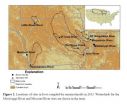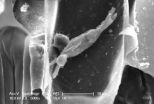(Press-News.org) Less than 1% of research funding awarded by public and charitable bodies to UK researchers in 2008 was awarded for research on antibiotics, according to new research published in The Lancet Infectious Diseases.
The study, which is the first detailed assessment of public and charitable funding to UK researchers focusing on bacteriology and antibiotic research, suggests that present levels of funding for antibiotic research in the UK are inadequate, and will need to be urgently increased if the growing crisis of antibiotic resistance is to be tackled effectively by UK researchers.
According to lead author Professor Laura Piddock, of the University of Birmingham, UK, "The message that antibacterial (ie, antibiotic) drug resistance has become a world health crisis has been brought to global attention by WHO, the European Union (EU), the World Economic Forum, and, most recently, the UK Chief Medical Officer. As a world leader in biomedical research, UK research has an important part to play in tackling this crisis. However, our study clearly shows that the proportion of public and charitable funding for research into new antibiotics, understanding resistance mechanisms and ways of tackling resistance are inadequate for the size of the task."
Professor Piddock and her colleague analysed funding databases for the UK's main research funding organisations, finding that of £13•8 billion total available research funding, £269 million (1•9%) was awarded to bacteriology projects, and around a third of this (£95 million or 0•7% of total funding) was awarded for research on antibiotics. Additionally, £181 million in EU funding was awarded to antibiotic research consortia including researchers based within the UK, including two EU Innovative Medicines Initiative awards, totalling £85 million.
While this article focused exclusively on research funding for antibiotics, previous studies have shown that funding for other antimicrobials (antifungals and antivirals) is similarly low as a proportion of total funding.
As well as demonstrating that the proportion of research funding given for UK antibiotic research will need to increase, the authors suggest that publically available, subject-specific, funding databases will allow investment in priority areas to be tracked in future.
"Since 2011, most new EU funding has focused on public–private partnerships with industry", adds Professor Piddock. "However, an increased understanding about antibiotic resistance is needed, not least to inform strategies to both minimise and prevent antibiotic-resistant bacteria arising when new treatments become available."
In a linked Comment, Dr Michael G Head from the Farr Institute, University College London, UK, said "The private sector needs to be more transparent about how much they invest in areas related to antibiotics (generation of new therapeutics being an obvious and particularly important area), so that their data can be similarly analysed in detail. Efforts to document the investments of other countries regarding antibiotic resistance research would be beneficial and would allow funders and policymakers to chart the optimum future direction of research money. Metrics to establish the true burden of antibiotic resistance and methods also to assess the likely effect of other types of research are needed; for example, preventive research such as vaccine development will affect future burdens of bacterial infections and resistance."
INFORMATION:
The study was funded by the British Society for Antimicrobial Chemotherapy.
The funding organisations included in the study were: Medical Research Council (MRC), Biotechnology and Biological Sciences Research Council (BBSRC), Engineering and Physical Sciences Research Council (EPSRC), Department for Environment, Food and Rural Affairs (DEFRA), National Institute for Health Research (NIHR), Wellcome Trust, Technology Strategy Board (TSB), British Society for Antimicrobial Chemotherapy (BSAC), Healthcare Infection Society (HIS), The Royal Society, Action Medical Research, the European Commission FP7, and the EU IMI.
Less than 1 percent of UK public research funding spent on antibiotic research in past 5 years
New study from The Lancet Infectious Diseases
2014-07-25
ELSE PRESS RELEASES FROM THIS DATE:
Synchronization of North Atlantic, North Pacific preceded abrupt warming, end of ice age
2014-07-25
CORVALLIS, Ore. -- Scientists have long been concerned that global warming may push Earth's climate system across a "tipping point," where rapid melting of ice and further warming may become irreversible -- a hotly debated scenario with an unclear picture of what this point of no return may look like.
A newly published study by researchers at Oregon State University probed the geologic past to understand mechanisms of abrupt climate change. The study pinpoints the emergence of synchronized climate variability in the North Pacific Ocean and the North Atlantic Ocean a few ...
A world first: Researchers identify a treatment that prevents tumor metastasis
2014-07-25
Metastasis, the strategy adopted by tumor cells to transform into an aggressive form of cancer, are often associated with a gloomy prognosis. Managing to block the metastasis or, even better, prevent their formation would be a giant step towards the fight against cancer. Researchers at Université catholique de Louvain (Belgium) successfully performed this world first on models of human tumors in mice. The results of their study are published online on 24 July in the prestigious journal Cell Reports.
The work by Professor Pierre Sonveaux's team, at Université catholique ...
Noise pollution impacts fish species differently
2014-07-25
Acoustic disturbance has different effects on different species of fish, according to a new study from the Universities of Bristol and Exeter which tested fish anti-predator behaviour.
Three-spined sticklebacks responded sooner to a flying seagull predator model when exposed to additional noise, whereas no effects were observed in European minnows.
Lead author Dr Irene Voellmy of Bristol's School of Biological Sciences said: "Noise levels in many aquatic environments have increased substantially during the last few decades, often due to increased shipping traffic. ...
Four-billion-year-old chemistry in cells today
2014-07-25
Parts of the primordial soup in which life arose have been maintained in our cells today according to scientists at the University of East Anglia.
Research published today in the Journal of Biological Chemistry reveals how cells in plants, yeast and very likely also in animals still perform ancient reactions thought to have been responsible for the origin of life – some four billion years ago.
The primordial soup theory suggests that life began in a pond or ocean as a result of the combination of metals, gases from the atmosphere and some form of energy, such as a lightning ...
Corn and soy insecticides similar to nicotine found widespread in Midwest rivers -- USGS news
2014-07-25
Insecticides similar to nicotine, known as neonicotinoids, were found commonly in streams throughout the Midwest, according to a new USGS study. This is the first broad-scale investigation of neonicotinoid insecticides in the Midwestern United States and one of the first conducted within the United States.
Effective in killing a broad range of insect pests, use of neonicotinoid insecticides has dramatically increased over the last decade across the United States, particularly in the Midwest. The use of clothianidin, one of the chemicals studied, on corn in Iowa alone ...
Zerenex (ferric citrate) long-term Phase 3 study results published in JASN
2014-07-25
New York, NY - July 24, 2014 -- Keryx Biopharmaceuticals, Inc. (Nasdaq:KERX) (the "Company") announced the publication of results from the long-term, randomized, active control Phase 3 study of Zerenex (ferric citrate), the Company's investigational oral ferric iron-based phosphate binder, for the treatment of hyperphosphatemia in patients with end-stage renal disease (ESRD) on dialysis. The PERFECTED study (PhosphatE binding and iRon delivery with FErric CiTrate in EsrD) was published online today in the Journal of the American Society of Nephrology (JASN).
This Phase ...
New hope for powdery mildew resistant barley
2014-07-25
New research at the University of Adelaide has opened the way for the development of new lines of barley with resistance to powdery mildew.
In Australia, annual barley production is second only to wheat with 7-8 million tonnes a year. Powdery mildew is one of the most important diseases of barley.
Senior Research Scientist Dr Alan Little and team have discovered the composition of special growths on the cell walls of barley plants that block the penetration of the fungus into the leaf.
The research, by the ARC Centre of Excellence in Plant Cell Walls in the University's ...
NRG1 isoforms could be an effective therapeutic candidate to promote peripheral nerve regeneration
2014-07-25
Neuregulin 1 (NRG1) is a pleiotropic factor characterized by the existence of numerous isoforms arising from alternative splicing of exons that confer to the protein deeply different characteristics. NRG1 plays an important role for both the myelination occurring during development and the different phases occurring after injury in the peripheral nerve: axon degeneration, axon regrowth, remyelination and target reinnervation
Researchers at the University of Western Australia have discovered that the soluble NRG1 upregulation observed in Schwann cells immediately after ...
Assessment on self-care ability of children with spina bifda
2014-07-25
Spina bifda (SB) is a complex congenital central nervous system disease that is caused by the incomplete closing of the neural tubes during the embryonic phase. Many patients have varying degrees of spasticity, urinary and fecal incontinence and neurocognitive retardation. Such problems decrease the patients' functional independence and their quality of life. Researchers at Ankara Physical Medicine and Rehabilitation Education and Research Hospital, Turkey investigate the functional performance in children with SB, using the Pediatric Evaluation of Disability Inventory ...
Neurologic recovery from corticospinal tract injury due to subfalcine herniation
2014-07-25
After development of diffusion tensor tractography (DTT), which is derived from diffusion tensor imaging (DTI), three-dimensional reconstruction and estimation for three motor tracts, such as the corticospinal tract, the rubrospinal tract, and the corticoreticular pathway became possible. The corticospinal tract is known to be a major neural tract for motor function in the human brain. Several studies have reported on injury of the corticospinal tract by transtentorial herniation. In addition, some studies have demonstrated recovery of a corticospinal tract injured by transtentorial ...
LAST 30 PRESS RELEASES:
Otago experts propose fiber as first new essential nutrient in 50 years
Auburn Physics PhD student earns prestigious DOE Fellowship
AI tool helps you learn how autistic communication works
To show LGBTQ+ support, look beyond Pride Month
Using artificial intelligence to understand how emotions are formed
Exposure to wildfire smoke late in pregnancy may raise autism risk in children
Breaking barriers in lymphatic imaging: Rice’s SynthX Center leads up to $18 million effort for ‘unprecedented resolution and safety’
Dhaval Jadav joins the SETI Institute Board to help spearhead novel science and technology approaches in the search for extraterrestrial life
Political writing retains an important and complex role in the national conversation, new book shows
Weill Cornell Medicine receives funding to develop diagnostic toolbox for lymphatic disease
It started with a cat: How 100 years of quantum weirdness powers today’s tech
McGill researchers identify a range of unexpected chemical contaminants in human milk
Physical therapy research highlights arthritis’ toll on the workforce — and the path forward
Biomedical and life science articles by female researchers spend longer under review
Forgetting in infants can be prevented in mice by blocking their brain’s immune cells
Blocking immune cells in the brain can prevent infant forgetting
AI-driven ultrafast spectrometer-on-a-chip: A revolution in real-time sensing
World enters “era of global water bankruptcy”; UN scientists formally define new post-crisis reality for billions
Innovations in spatial imaging could unlock higher wheat yields
A twitch in time? Quantum collapse models hint at tiny time fluctuations
Community water fluoridation not linked to lower birth weight, large US study finds
Stanford University’s Guosong Hong announced as inaugural recipient of the SPIE Biophotonics Discovery’s Impact of the Year Award
Ice, ice, maybe: There’s always a thin layer of water on ice — or is there?
Machine learning lends a helping ‘hand’ to prosthetics
Noninvasive brain scanning could send signals to paralyzed limbs
Community water fluoridation and birth outcomes
SGLT2 inhibitors vs GLP-1 receptor agonists for kidney outcomes in individuals with type 2 diabetes
Long-term exposure to air pollution and risk and prognosis of motor neuron disease
Five-year absolute risk–based and age-based breast cancer screening in the US
Study finds elevated alcohol involvement in suicides of lesbian, gay and bisexual women
[Press-News.org] Less than 1 percent of UK public research funding spent on antibiotic research in past 5 yearsNew study from The Lancet Infectious Diseases


